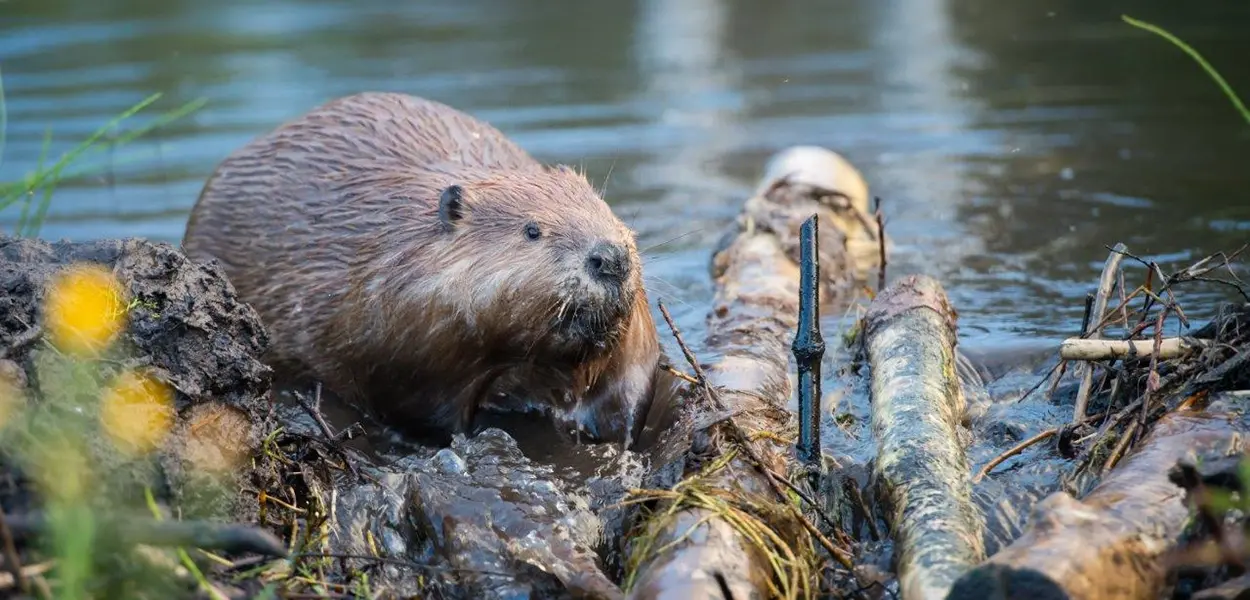- Three beaver kits spotted at Sculthorpe Moor Nature Reserve in Fakenham, Norfolk this week, becoming the latest addition to the reserve’s resident beaver family
- The original pair were introduced to the site in 2022 as part of a 5-year biodiversity project led by the Hawk and Owl Trust
07 June 2024 – Three beaver kits have been caught on camera at the Hawk and Owl Trust’s Sculthorpe Moor Nature Reserve in Norfolk this week.
The playful newcomers join their two older siblings, born last year to the Eurasian beaver pair introduced to the reserve in 2022 as part of a project to enhance biodiversity and encourage more birds of prey to take up residence at the site.
Beavers were hunted to extinction in the UK in the 16th century for their fur, meat, and even the oil from their scent glands. Efforts to reintroduce the species over the past few decades mean England’s beaver population now stands at around 500. The arrival of the three youngsters brings Fakenham’s count to seven.
Adrian Blumfield, Operations Director at the Hawk and Owl Trust, which manages Sculthorpe Moor Nature Reserve, says: “The arrival of the three kits is a hugely positive sign for the health of the reserve’s ecosystem and a boon for the UK’s beaver population.
“While the beavers are most active at dawn and dusk, making daytime sightings less frequent, our volunteer monitoring wardens have compiled some incredible video footage of the kits exploring the world around them, splashing around in the water and even working together to build a new dam. Watching these amazing creatures interact with each other and their environment is a truly exceptional experience. We welcome all visitors to join us at Sculthorpe Moor Nature Reserve during our daily opening hours of 9am-4pm to learn more about beavers and the vital role they play in supporting a rich tapestry of wildlife.”
How beavers are helping to grow numbers of birds of prey
Beavers are herbivores, living on a plant-based diet consisting of a wide range of bark, shoots, leaves and roots. They fell trees for food but also to use as building materials for constructing their dams and lodges.
Beaver foraging opens up woodland canopy, allowing more light to reach the ground, promoting the growth of a diverse range of plant species. The increased plant diversity creates more food and shelter for insect-eating birds, bats, amphibians and other small creatures, while the deadwood left on land and in water provides shelter for many species from their predators.
In Nature, the fine connections that exist between all organisms are what help maintain balance. Plants and animals in a community are linked by what they eat or what gives them energy.
Raptors – such as hawks, owls, eagles and falcons – are at the top of the food chain and play a key role in their ecosystems. When populations of birds of prey go down, the numbers of their prey species go up, creating an imbalance in the ecosystem.
The Beavers and Biodiversity Gain Project
The Beavers and Biodiversity Gain Initiative was established to tackle this disparity. Spearheaded by the Hawk and Owl Trust, the initiative secured funding from the Green Recovery Challenge Fund, which is part of the government's post-pandemic efforts, alongside public contributions.
The creation of the beaver enclosure and woodland has led to an increase in the number of raptors on site and initial signs show an increase in biodiversity.
About Beavers
With their stocky builds and long tails, the Eurasian Beaver is Britain's largest rodent and the world’s second largest. They are semi-aquatic mammals, sporting thick brown fur, long orange teeth for gnawing, and webbed back feet for swimming. Beavers are thought to mate for life. They live in small family groups and tend to have a litter of two to four babies – or kits – each year. The young beavers stay with their parents for about two years before venturing out to establish their own homes.


